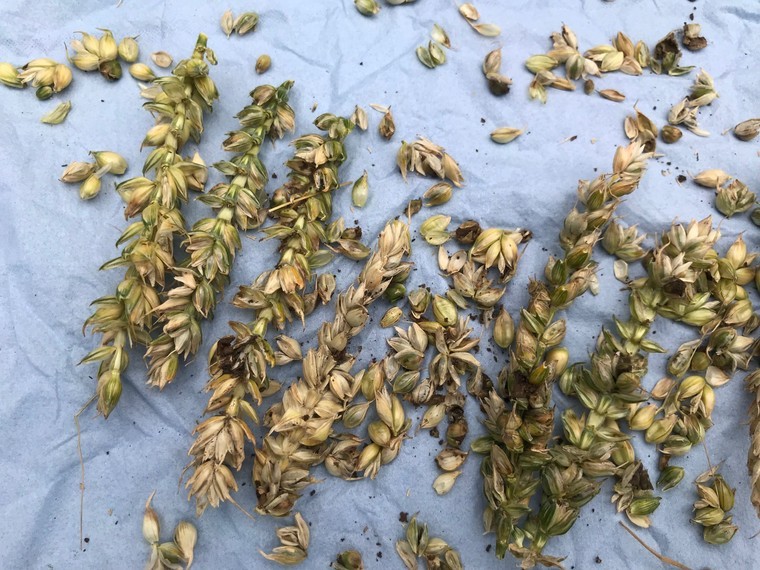Cereal seed diseases like bunt (Tilletia tritici) or loose smut (Ustilago tritici or U. nuda) have rarely been seen over the past decade as seed treatments have been very effective at controlling them. Recently, there has been a small, but increasing trend against the use of seed treatments in farm saved seed and certified seed in favour of saving costs and supporting soil biology.
However, Kerry Maguire, Bayer’s Agronomic Solutions Manager for Arable Diseases warns that unless growers know the disease status of their seed crop, they are taking a gamble by not using a seed treatment, “Previously well-controlled seed-borne diseases have the potential to emerge unexpectedly and at high levels, causing significant yield loss.”
Bayer is conducting the seed disease resurgence trial at its Shelford trial site in Cambridgeshire, and at Stockbridge Technology Centre in Yorkshire. The trials began with untreated KWS Basset wheat seed, and Cassata barley seed, saved two years ago and split into treated and untreated trial plots. Treated wheat plots had Redigo Pro (prothioconazole and tebuconazole) applied, while treated barley plots had an application of Raxil Star (prothioconazole, tebuconazole and fluopyram). Both treated and untreated plots received maintenance fungicide sprays during the growing season as required.
“The results from year two in the untreated wheat plots at Shelford have been quite extraordinary,” says Dr. Maguire. “Bunt infection in the untreated plots ranged from 6.3% to 28% infection, with an average of 15% of ears infected across the trial. In the barley plots there is a small amount of loose smut, but no net blotch or leaf stripe have been seen yet.”
None of the trial plots at Stockbridge are showing any visible disease yet.
Dave Holah, Bayer’s Country Regulatory Manager for UK and Ireland explains that one of the reasons behind the trial is to look at what might happen if seed treatments are no longer available. He says, “With a regulatory environment that looks set to continue the reduction in crop protection products, we could see a future where traditional chemical seed treatments are unavailable. While this scenario may be many years off, we needed to look at what difficulties growers may face without these treatments when growing certified seed crops, and when saving seed for their own use.
“We were not expecting to see results in year two, so the Shelford wheat trial is a surprise. We hope that we will be able to clean sufficient seed from the untreated plots to be able to drill again.”
One of the challenges of seed-borne disease is that unlike bunt, which occurs on the seed surface, other diseases such as loose smut exist in the seed embryo and cannot be detected without lab testing, nor removed by surface cleaning.
“We advise growers to regularly inspect fields destined for farm saved seed before harvest, and test seed to help inform any treatment decisions,” concludes Dr. Maguire.
Pictured: Bunt on wheat ears – untreated plot




